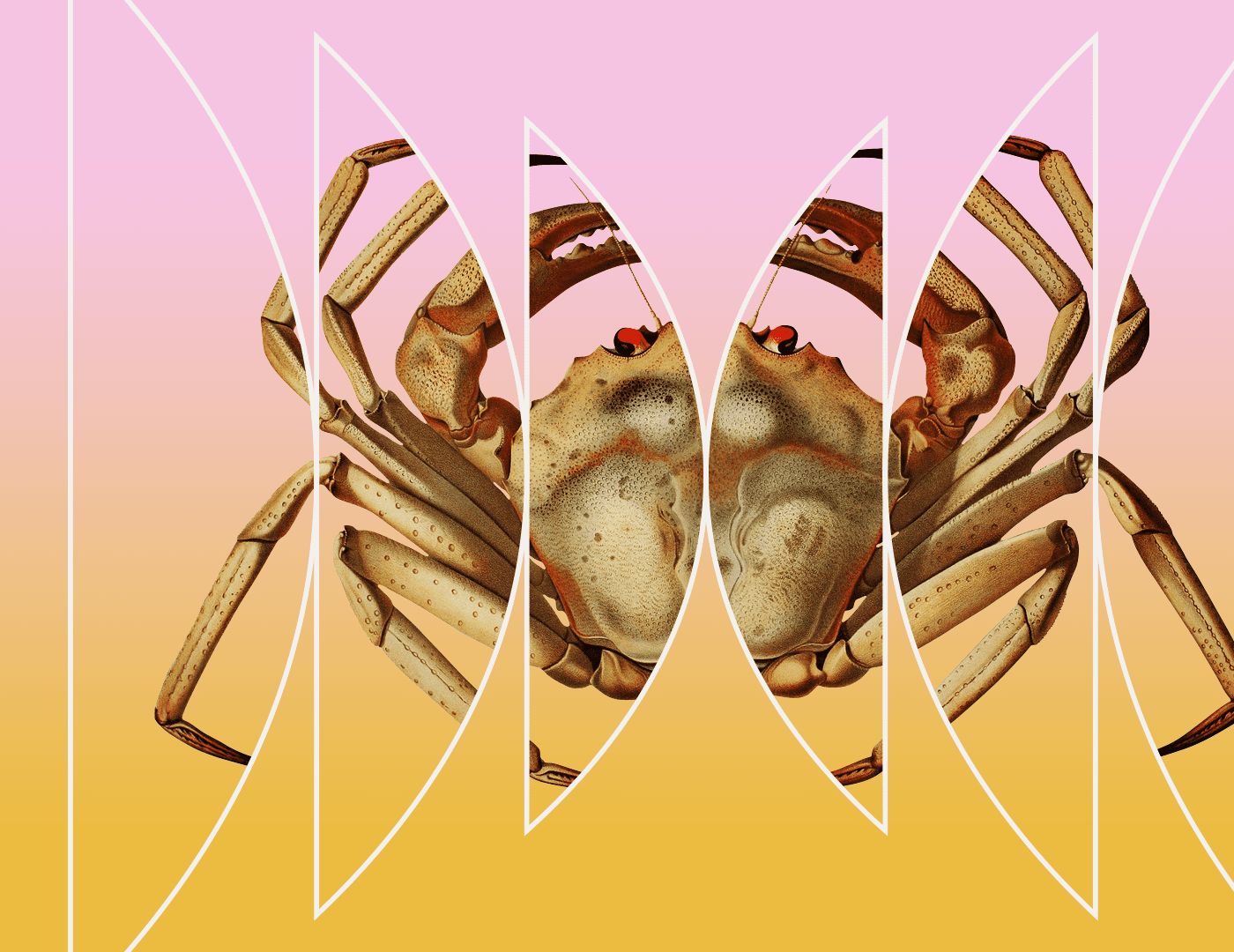
Deep Dive
Shownotes Transcript
This week we examine one of nature's most humble creations: crabs. Turns out when you look closely at these little scuttlers, things get surprisingly existential — about how to come into being, how to survive chaos, and how to live. We even examine the possibility of evolutionary destiny.
This episode is a two-parter, a double-decker crab cake of sorts. Served up on a bed of lettuce and beautiful weirdness. The first layer comes from producer Rachael Cusick, and is a story she told live on stage at Pop-Up Magazine) (http://www.popupmagazine.com) as a part of their Fall of 2022 tour. It chronicles a cross-species love story between artist Mary Akers) (http://maryakers.com/) and an overlooked pet store companion, a creature that even Chris Tudge) (https://zpr.io/MyUNwPAaqewg) — the scientist dedicated to this creature, you could say — could not get a ring on. The second layer is cooked up by Lulu, who tries to understand why crabs keep evolving (according to recent work by Jo Wolfe) (https://zpr.io/2GftY9RjbLkF), Heather Bracken-Grissom) (https://zpr.io/HhvMVfnThp5P) and Javier Luque) (https://zpr.io/xBiQHEtNSKZr)).
Crack a leg and see what we mean.
*Special thanks to the entire team at Pop Up Magazine, **Randi Rotjan, Jan Pechenik, *Renae Brodie, *Samantha Edmonds, whose story) (https://zpr.io/ELQS4VkJGaSa)) from The Outline introduced us to Mary, *
EPISODE CREDITS:
Reported by - Rachael Cusick and Lulu Millerwith help from - Annie McEwenProduced by - Becca Bressler with help from Ekedi Fausther-KeeysOriginal music and sound design contributed by - Ghost Girl, Jeremy Bloom with mixing help from - Arianne WackFact-checking by - Diane Kellyand Edited by - Haley Howle and Pat WaltersCITATIONS:
Articles:If you want more details about hermit crab breeding, head over to Mary’s blog to read more: http://maryakers.com/inthecrabitat/)Or check out the Land Hermit Crab Owners Society: https://lhcos.org/)
Our newsletter comes out every Wednesday. It includes short essays, recommendations, and details about other ways to interact with the show. Sign up) (https://radiolab.org/newsletter)!
Radiolab is supported by listeners like you. Support Radiolab by becoming a member of The Lab) (https://members.radiolab.org/) today.
Follow our show on Instagram), Twitter) and Facebook) @radiolab, and share your thoughts with us by emailing [email protected]).
Leadership support for Radiolab’s science programming is provided by the Gordon and Betty Moore Foundation, Science Sandbox, a Simons Foundation Initiative, and the John Templeton Foundation. Foundational support for Radiolab was provided by the Alfred P. Sloan Foundation.
